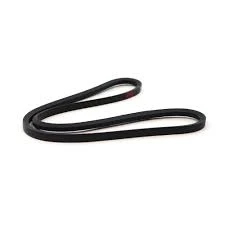- Arabic
- French
- Russian
- Spanish
- Portuguese
- Turkish
- Armenian
- English
- Albanian
- Amharic
- Azerbaijani
- Basque
- Belarusian
- Bengali
- Bosnian
- Bulgarian
- Catalan
- Cebuano
- Corsican
- Croatian
- Czech
- Danish
- Dutch
- Afrikaans
- Esperanto
- Estonian
- Finnish
- Frisian
- Galician
- Georgian
- German
- Greek
- Gujarati
- Haitian Creole
- hausa
- hawaiian
- Hebrew
- Hindi
- Miao
- Hungarian
- Icelandic
- igbo
- Indonesian
- irish
- Italian
- Japanese
- Javanese
- Kannada
- kazakh
- Khmer
- Rwandese
- Korean
- Kurdish
- Kyrgyz
- Lao
- Latin
- Latvian
- Lithuanian
- Luxembourgish
- Macedonian
- Malgashi
- Malay
- Malayalam
- Maltese
- Maori
- Marathi
- Mongolian
- Myanmar
- Nepali
- Norwegian
- Norwegian
- Occitan
- Pashto
- Persian
- Polish
- Punjabi
- Romanian
- Samoan
- Scottish Gaelic
- Serbian
- Sesotho
- Shona
- Sindhi
- Sinhala
- Slovak
- Slovenian
- Somali
- Sundanese
- Swahili
- Swedish
- Tagalog
- Tajik
- Tamil
- Tatar
- Telugu
- Thai
- Turkmen
- Ukrainian
- Urdu
- Uighur
- Uzbek
- Vietnamese
- Welsh
- Bantu
- Yiddish
- Yoruba
- Zulu
Aug . 07, 2024 09:50 Back to list
Understanding the Importance of Timing Belt Rubber in Vehicle Performance and Maintenance Solutions
The Importance of Timing Belt Rubber in Automotive Engineering
In the intricate world of automotive engineering, timing belts play a crucial role in the function of an internal combustion engine. Among the most vital components of these belts is the material they are made from—rubber. The selection and quality of timing belt rubber can significantly influence the performance, longevity, and reliability of a vehicle.
Understanding Timing Belts
A timing belt is a key component that synchronizes the rotation of the crankshaft and camshaft(s) in an engine. This synchronization ensures that the engine's valves open and close at the correct times during each cylinder's intake and exhaust strokes. Inaccurate timing can lead to engine malfunctions, decreased performance, and, in worst-case scenarios, catastrophic engine failure. Therefore, the choice of timing belt material, particularly rubber, becomes paramount.
The Role of Rubber in Timing Belts
Rubber is favored for timing belts primarily due to its flexibility, durability, and ability to withstand the varying conditions found within an engine compartment. Timing belts are typically made from high-quality synthetic rubber reinforced with materials like fiberglass or steel to enhance tensile strength. This construction ensures that the belt can withstand the immense pressures and heat generated within an engine while maintaining its integrity over time.
One of the most significant properties of rubber used in timing belts is its resistance to wear and tear. Over time, rubber can degrade due to heat, oil, and stress. High-quality timing belt rubber is engineered to resist such degradation, offering longer service intervals and reducing the risk of belt failure. This resilience is crucial, as belt replacement can be labor-intensive and costly, not to mention the potential engine damage that can arise from a broken timing belt.
timing belt rubber

Advantages of Using High-Quality Rubber
1. Temperature Resistance The engine operates under high temperatures, and the rubber used in timing belts must be able to withstand these conditions without losing elasticity, cracking, or melting. High-performance rubber compounds provide the heat resistance that standard rubber may lack.
2. Chemical Resistance In addition to heat, timing belts are also exposed to various automotive fluids, including oil and coolant. The choice of rubber material can influence its chemical resistance, which is critical in ensuring that the belt does not lose its properties and remains functional over its life cycle.
3. Noise Reduction High-quality rubber compounds can help minimize noise produced during operation. A well-designed timing belt can operate more quietly, enhancing the overall driving experience.
4. Cost-effective Maintenance Investing in a quality timing belt made of premium rubber can lead to reduced maintenance costs over time. High-quality belts have longer lifespans, meaning fewer replacements are needed, thereby saving on both parts and labor.
Conclusion
In conclusion, the role of timing belt rubber in the automotive industry cannot be underestimated. It serves not just as a functional component but as a backbone of engine performance and reliability. As automotive technology continues to evolve, the materials used, including rubber for timing belts, will also advance, leading to improved performance and efficiency. Car owners must prioritize the quality of these components to ensure the longevity and health of their vehicles. Understanding the importance of timing belt rubber can lead to better decision-making when it comes to maintenance and replacements, ultimately contributing to a more robust and reliable automotive experience.
-
Korean Auto Parts Timing Belt 24312-37500 For Hyundai/Kia
NewsMar.07,2025
-
7PK2300 90916-T2024 RIBBED BELT POLY V BELT PK BELT
NewsMar.07,2025
-
Chinese Auto Belt Factory 310-2M-22 For BMW/Mercedes-Benz
NewsMar.07,2025
-
Chinese Auto Belt Factory 310-2M-22 For BMW/Mercedes-Benz
NewsMar.07,2025
-
90916-02660 PK Belt 6PK1680 For Toyota
NewsMar.07,2025
-
drive belt serpentine belt
NewsMar.07,2025

